The Mobile Revolution. Have you heard that one before. Well, just when it’s about to happen thanks to the iPhone and the Android OS I’d like to launch a thought about the next revolution – ‘The Revolution of the Screens’.
A couple of month back I got my Amazon Kindle. I blogged about the Microsoft Courier interface earlier this year. Others and me keep buzzing about what the Apple Tablet will be like, if there will ever be one (of course it will). Google launched their Chrome OS just over a week ago. Last week I read that the new Barnes & Noble Nook has sold out for the Holidays this year. And a couple of days ago I blogged about the New York Times Skimmer interface.
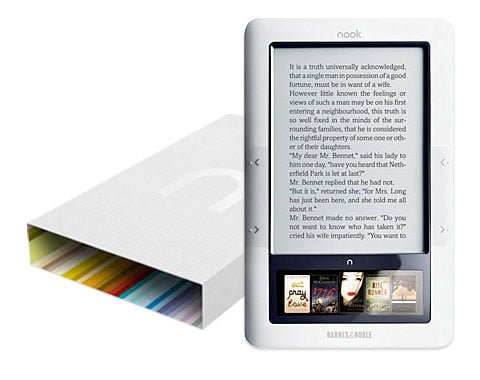
The Nook – Barnes & Nobles answer to Amazon Kindle
People and companies keep talking about how we all will move our behavior and communication onto the mobile when in fact my firm belief is that in 2010 we’ll see the start of ‘The Revolution of the Screens’ more screens coming out and people will definitely not use one device but instead multiple devices.
Here are 10 reasons why we will see a screen revolution in 2010:
1. The Cloud is expanding
Personally I’ve moved my entire computer into the cloud. The worlds best service, Dropbox, has totally reinvented my way to work. I’m accessing my files via 4 different computers and my iPhone. My notes are best read via Evernote. Millions of people have switched to Google Apps. Companies are looking into cloud computing.
There’s simply no reason to not connect ourselves to the net. Storing data on our own discs with the risk of loosing it is not a solution in the long run.
As more people are moving their work to cloud based services we simply do not need one computer or one mobile. Instead we’ll gladly access our favorite content using screens that are optimized for that type of content.
2. The Google Chrome OS is the first OS that cannot be installed
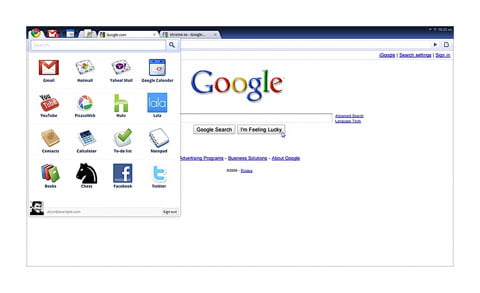
The new Google Chrome OS
This week we saw the first official glimpses of the new Google Chrome OS. It’s a neat little thing more or less erases what the conventional OS are doing. Your computer is working with no interference directly against your hardware. This makes things faster, more stable and secure. The downside is you’ll have to order a computer with the OS installed on delivery and you cannot change afterward.
Googles ambition is to work against the cloud and thereby being able to access your files from anywhere anyhow. In the long run Google Chrome OS will change peoples perception on how, why and where we access certain information.
3. The cost of producing your own technology is dropping fast
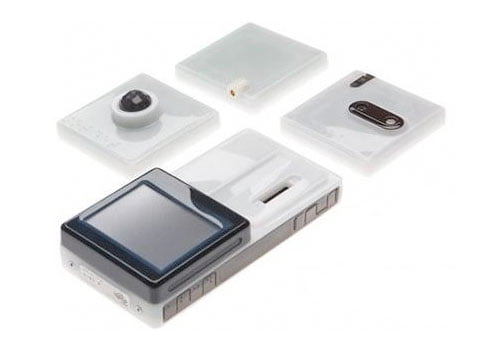
Bugbase – Lego for Geeks
If we go back a couple of years you basically had to be a Fortune 500 in order to produce any kind of hardware that potentially could spread among the masses. Screens were pretty shitty. Processors were to expensive and building an OS demanded hard and long work. But as we’ll see screens produced for a single reason, say reading a book, the devices doesn’t have to have a complex OS and the interface only have to serve a single purpose.
Now prices are falling and the technology is being accessible for anyone with geeky fingers. Bugbase and Arduino are the best examples of this right now. Suddenly any company with brains can product mobile technology.
4. User interfaces has started to move from OS centric to User Centric
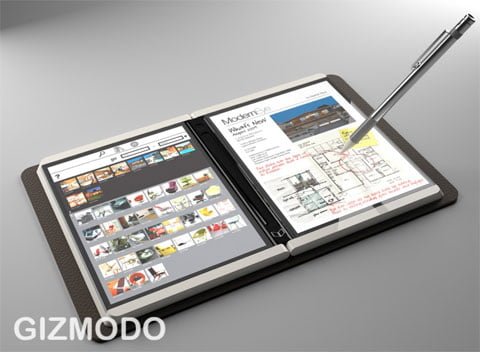
The Microsoft Courier Interface
If you’re in a meeting chatting away about new business, a screen in front of you might be the one thing that won’t get that signature on the final line. I’d the first one in line when someone launches something that is digital, communicates with the cloud and is perfectly suitable for taking notes – with a pen! This is exactly what the Microsoft Courier interface looks like.
Together with services like Dropbox that syncs between Microsoft, Linux and Apple environments the actuall gadget is no longer the problem. I can sit in that meeting, take my notes on a Notepad then once I’m in the office I’ll bring them up on my stationary computer and finalize the edit of them on my Macbook. The screens and the interface should of course be optimized for each and every purpose!
5. I’d rather read a book on my Amazon Kindle
Only days after establishing a reader behavior on my Kindle I’ve realized I’d never go back to reading books or longer texts on a computer. We all know that the paper industry are pretty darn happy about the fact that people print digital documents. Screens changes all this. Once I get a document today I just mail it to my Kindle. I grab a cup of coffee and there I am, back to reading old style only this time the fonts are composed out of zeros and one’s.
6. The media industry slowly get it but when they do they’ll create screens
Glossy magazine screens. Morning paper screens. Cooking book screens. Learning screens. Notebook screens. In 2010 we’ll see them flying out of companies business development departments like birds out of a birds nest. It’s obvious that the media industry needs to grab us by the balls and try to lock us in again – and the screens will be their weapon!
7. The subscription model will spread outside telecoms
If you buy a mobile phone in most parts of the world you pay next to nothing for the phone since it’s the usage of the phone that brings the cash to the cow. This will be the way with screens. It would be so simple for the newspaper industry to create a big format screen suitable for reading newspapers. Then offer it for free with a 24 or 36 month subscription that automatically renews every year after.
The only question is – will we see an Apple Tablet that lets us buy newspapers, glossy mags and more from iTunes before the media industry get it? I hope so!
8. The ‘App Store’ business model works fine in any business
Apple has sold more than 2 billion applications through their app store. 33% of all the book sales on Amazon.com passes through the Amazon Kindle. I wrote a piece a while back about how the car industry can innovate their business using screens and apps.
Another interesting beacon leading us in this direction is the new App Studio from HP. Basically HP has already installed one of these ‘screens’ on their latest printer. Then you, me or any other company can build an app that the HP users can install. And bam, you’ve got a set of killer apps. For example USA Today let’s you print articles and Google Maps guides you in the right direction. Get your but over there and have a look – it really makes you get it.
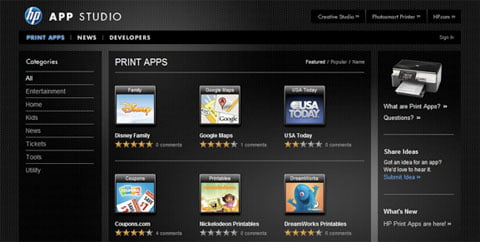
The HP App store. Apps for your printer
9. Screens create structural bindings
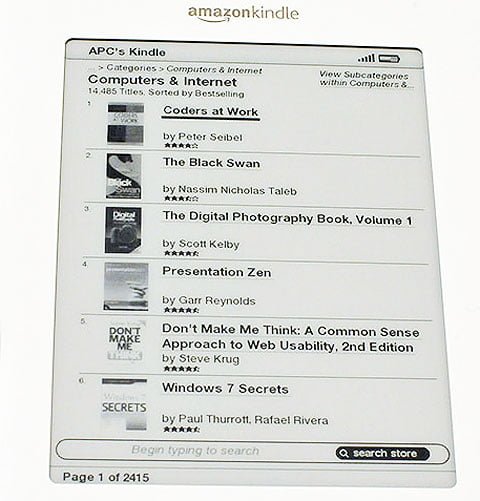
Buy your books in one place – and one place only!
Remember that old 4 P. Product, Place, Positioning and Promotion. Well, once you’ve but a screen in the hands of a consumer you can stop worrying about 3 of these. Your store is in the hands your the consumer. You back up their products, you help them to find new ones, you develop a behavior that makes switching screen harder and harder as every day passes.
If we look at companies like Amazon or HP. Meaning the brands that does not turn to the screens in order to save a business model but instead create a new one. For these brands screens create strong structural bindings. I mean, why would I go anywhere else than Amazon to buy a book as long as I got my Kindle. Once I’ve create a nice set up of applications on my HP printer then I will have a hard time switching brands once I’m looking to upgrade that tree eater of mine.
10. Cause it makes sense
In the end it’s all about usability. It’s obvious we need different screens for different purposes. And as the price of technology falls, cloud computing spreads while connectivity is everywhere there’s simply no reason to have one screen.